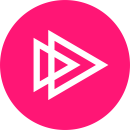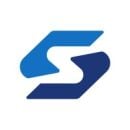Edtech companies play a crucial role in upgrading education through various technologies, especially with issues like accessibility and remote learning in the spotlight. Education technology platforms, ebooks and game-based learning apps have fueled the desire for a tech-driven student experience. As a result, the edtech industry is expected to reach a valuation of $348.41 billion by 2030, despite hiccups in venture funding.
This growth has led to an increasing number of edtech companies supporting schools, teachers and students. While education companies like Udemy and Coursera offer students online courses on specific topics, technology platforms like PowerSchool help teachers and administrators manage and track students’ progress.
Artificial intelligence has also had a big impact on the edtech industry. Generative AI, the underlying technology behind popular chatbots like ChatGPT and Gemini, has enabled personalized learning opportunities for students and teachers, allowing them to create custom lesson plans or individualized study material.
Types of Edtech Companies
- Educational chatbots
- Learning management platforms
- Online learning providers
- Interactive learning and gaming platforms
- Online studying and tutoring services
- Language learning platforms
An expanding edtech sector also means more jobs and a greater demand for skilled professionals among edtech brands. Front-end and back-end developers, UX designers and cybersecurity analysts are some of the most popular roles. While these jobs require knowledge in areas like programming languages, data science and UX design, edtech companies still look for well-rounded candidates. Interpersonal skills like emotional intelligence aid tech workers in understanding and meeting the diverse needs of students, teachers and school systems.
Edtech Companies to Watch
The following education technology companies are helping to shape the industry, tackling questions of pedagogy and business in the process.
Top Edtech Companies to Know
- OpenAI
- Coursera
- Skillsoft
- Udemy
Founded: 2010
Location: San Francisco, California
Udemy provides its millions of students with a learning platform that hosts an array of courses for personal enrichment and professional development. It offers courses in dozens of languages in topics like photography, business, marketing, development and design. The company also has a business option for organizations to enrich their employees with its courses.
Founded: 2015
Location: San Francisco, California
MasterClass is a digital platform that allows users to take online classes and learn from world-leading experts in areas like sports, writing, music, cooking and filmmaking. With Stephen Curry, Gordon Ramsey and Annie Leibovitz among the teaching ranks, students can soak up unique insights from some of the most accomplished individuals in their professions.
Founded: 2021
Location: San Francisco, California
OpenAI is best known for its popular ChatGPT chatbot, which is capable of responding to a variety of questions. But when looking to support students, the company developed a custom version of ChatGPT called ChatGPT EDU, which provides schools and universities with enhanced reasoning tools and features tailored specifically for learning. For example ,it can provide step-by-step explanations, analyze datasets and create presentations.
Founded: 2000
Location: Louisville, Colorado
Peaksware provides practice software for musicians and athletes. Each of the company’s brands is designed for a specific user: TrainingPeaks offers software to plan endurance training, TrainHeroic helps meet strength and conditioning needs, MakeMusic innovates how music composition and performance is taught while Alfred Music provides method books, sheet music and reference materials for musicians and their teachers. All the platforms use the Deliberate Practice training model, tracing paths from novice to expert.
Founded: 2022
Location: New York, New York
Stepful is an edtech startup that aims to re-imagine healthcare education for entry-level positions in the industry, like pharmacy techs and medical assistants. It has digital-first training cohorts that last months, rather than years. The company says it leverages AI throughout its platform, such as to send messages to students who are falling behind.
Founded: 2011
Location: Boston, Massachusetts
Ellevation Education was created by English language learner educators for ELL educators to help teachers collaborate with other instructors, track student progress and manage educational programs across classrooms and school districts. Its products are used across the United States to empower students with academic language, build teacher’s capacity to serve multilingual learners and manage complex program requirements.
Founded: 2014
Location: Los Angeles, California
HopSkipDrive offers technology for school transportation that connects counties, districts and schools with a network of vetter “CareDrivers.” It provides transportation to small groups of children as an alternative to school buses. The company provides clients with advisory and software services.
Founded: 2008
Location: San Francisco, California
Academia is a platform for researchers to create profiles, connect with other researchers and upload publications. It aims to make all academic papers available online for free, so scientists can share their work independently of the journal system.
Founded: 2023
Location: San Francisco, California
Anthropic, creators of the Claude chatbot, has a specialized platform for higher education institutions, helping students improve their reasoning skills by providing assignment feedback and step-by-step guidance for complex mathematical problems. Meanwhile, educators can use the platform to customize their lesson plans with things like custom rubrics.
Founded: 2004
Location: Draper, Utah
Pluralsight offers an extensive library of content to facilitate professional development throughout the tech industry. Its educational offerings cover everything from programming languages and mobile development to cloud architecture and IT automation. The company has a variety of solutions to serve business customers, including options to help with upskilling, taking on cloud transformation, enhancing security and onboarding engineers.
Founded: 2014
Location: Fully Remote
Snap! Raise simplifies group fundraising for sports teams and youth groups, replacing the hassle of door-to-door sales and flyering with customizable online campaigns. Its interface expands the reach of digital campaigns, so it takes less time and manual labor to access more neighborhoods. The site also lets organizations access some of their funds before fundraising begins, giving them more financial flexibility.
Founded: 1888
Location: New York, New York
McGraw-Hill has been a major textbook publisher since 1917, and it has since adapted its products for digital formats. Students can access online content through ebooks and McGraw-Hill’s mobile app. Meanwhile, teachers can conduct online courses and track students’ progress through the company’s Connect product, which integrates with various learning management systems. More recently, the company also developed an AI chatbot that helps students and teachers with writing and lesson planning.
Founded: 1999
Location: New York, New York
To help kids better connect to the subjects they’re learning, BrainPOP is bringing a more playful approach to the classroom. Students can engage with topics through interactive games, videos and activities. From math to music, kids can explore different pathways while growing their social-emotional skills.
Founded: 2013
Location: New York, New York
360Learning’s platform helps businesses create learning and development programs that encompass everything from employee onboarding and sales enablement to compliance training. It offers AI-powered features like a question generator and writing assistant to streamline creation of course content.
Founded: 2007
Location: New York, New York
RethinkFirst provides its RethinkEd platform to school districts and educators. It offers solutions for every educational challenge, including parent training, student progress tracking, professional development, IEP goal writing, intervention strategies, digital data management and curriculum planning.
Founded: 2015
Location: Austin, Texas
ReUp Education offers products and services to help nontraditional students start or finish their college education. It provides administrative guidance through the process of re-enrollment and credit transfers. The company also helps students get back into school by liaising with educational organizations and offering financial aid assistance.
Founded: 2012
Location: Fully Remote
Coursera offers classes from more than 275 top companies and universities, including Stanford and Duke, in an open online format. More than 100 million learners have explored fields that include data science, philosophy and fashion through the platform’s suite of video lectures, auto-graded homework assignments and discussion forums.
Founded: 2012
Location: Austin, Texas
Aceable makes an app for driver’s education, which includes interactive courses and practice modalities that prepare students for the written driver’s test. Rather than attending in-person courses, students can use the app’s content to prepare, then get certified directly through the app, leaving only the practical driving test to perform in person.
Founded: 2015
Location: Fully Remote
With over 160 partnerships with institutions and employers, Mentor Collective strives to form inclusive mentorships for students. The company combines services, technology and research to design mentorship programs that benefit most students on campus. Mentors are recruited directly through the company and undergo training before being matched with a student. From there, engagement support and assessments are given periodically to improve programs.
Founded: 2022
Location: San Francisco, California
Perplexity offers a popular AI search engine, chatbot and web browser. It also provides Perplexity Education Pro to its paid Pro subscribers, giving them more citations than the free-to-use chatbot and access to Study Mode. The Study Mode enables students to create interactive flashcards and quizzes based on their curriculum.
Founded: 1998
Location: Mountain View, California
Google’s Gemini chatbot has free generative AI features for educators. Through the Gemini for Education platform, teachers can use AI to plan lessons, create custom materials for diverse learning methods and generate assessments and assignments. The platform can also be integrated into Google for Education, one of the most popular digital education platforms.
Founded: 1992
Location: Arlington, Virginia
Through Rosetta Stone’s software and web services, students can gain proficiency in 25 languages, including English. The curriculum supports students by combining listening, speaking and writing activities while guiding them through real-world scenarios and live coaching sessions with native speakers. Rosetta Stone also tailors its products to meet the unique needs of businesses, schools and individuals.
Founded: 1998
Location: Fully Remote
Skillsoft is a cloud-based learning platform geared toward corporate training and workforce upskilling. Its extensive library of video-based courses covers topics ranging from leadership essentials to product management skills to data science fundamentals. To leverage artificial intelligence, Skillsoft’s skills intelligence platform incorporated the technology identity learning gap and provided pathways for individuals to address them.
Founded: 2023
Location: Lehi, Utah
SchoolAI provides an educational AI platform built specifically for classrooms. It offers tools for lesson planning, tutoring, formative assessments and personalized learning pathways. Beyond individual classrooms and schools, SchoolAI can help entire districts develop strategic initiatives to establish responsible AI usage.
Founded: 2014
Location: New York, New York
Teachable enables creator-educators to make sustainable income by offering online courses. This allows tens of thousands of creator-educators to get paid directly by their audience members. The company also provides memberships and maintains communities to connect users.
Frequently Asked Questions
What types of edtech companies operate in the industry?
Edtech companies include educational chatbots, learning management platforms, online learning providers, interactive learning and gaming platforms, tutoring services and language learning platforms.
How do AI chatbots help students and educators?
Chatbots such as ChatGPT EDU and Claude provide step-by-step explanations, assignment feedback, dataset analysis, complex problem guidance and customizable rubrics.
How do edtech companies support classroom learning?
Edtech companies offer tools for lesson planning, student progress tracking, personalized learning pathways, tutoring, assessments and AI-powered support for both teachers and students.
























